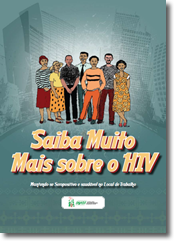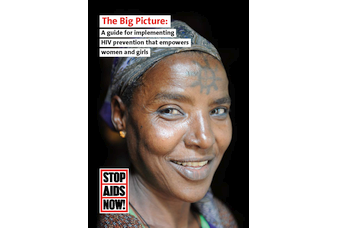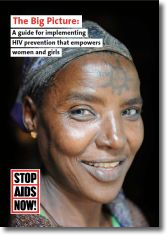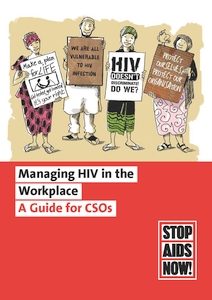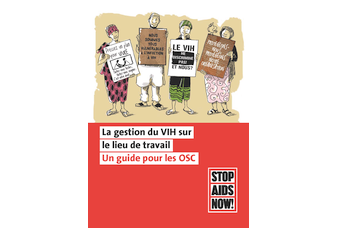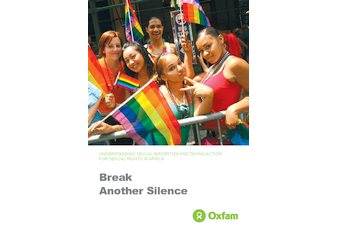Know Much More About HIV: Staying positive and healthy in the workplace
SAfAIDS asked me to write a booklet for employees, as part of a toolkit to support workplace responses to HIV. I wanted to give readers more options and more detail than the usual HIV prevention messages, and so set out 26 ways in which individuals can reduce their risk of acquiring HIV.
The booklet also outlines the steps which individuals can take to create a supportive and healthier workplace, and is available in Portuguese.
Extract
What has HIV got to do with your workplace?
There are many different things which affect how well you and your colleagues work, and how productive your organisation is. Among those many factors, the impact of the HIV epidemic is likely to be significant. The effects of HIV in the workplace include:
- If employees become infected with HIV and do not access treatment, then HIV will, in time, badly affect their health and productivity, leading to severe illness and their eventual death;
- Increased staff absenteeism and higher staff turnover cause problems. These include stalled projects, missed targets, colleagues becoming overworked, managers spending too much time sorting out problems related to health issues, and lower morale in the workforce;
- Staff costs tend to rise. This is due to higher medical costs, more funeral expenses and death benefits, and increased recruitment and training costs;
- Efficiency is also undermined when staff are indirectly affected by HIV. For example, caring for sick relatives, or taking on responsibility for relatives’ children, takes time and causes stress.
However, we are not powerless against HIV. We can manage HIV in the workplace in three ways:
- Support staff and their family members to protect themselves from HIV infection
- Support staff (and sometimes their family members) who are HIV infected to maintain their health and their ability to work.
- By advocating for and creating a supportive working environment that implements its HIV policy and operates a wellness programme, with peer educators, educational awareness campaigns and programmes for staff.
What’s in this booklet?
Section 2 covers basic information on HIV transmission, progression to AIDS, and treatments for HIV and the opportunistic infections that arise from it. It may be a useful reminder for you, even though you already know a lot. You can use the information there to work out for yourself if a certain situation has potential for HIV transmission.
Section 3 deals with ways of preventing HIV transmission. This means both protecting yourself from getting infected, and stopping transmission of HIV to others.
Section 3.1 goes beyond the usual ABC of HIV prevention, and gives you 14 different options for reducing the chance of HIV transmission through sex! You may find new options there that you can use.
Section 3.2 concentrates on reducing HIV transmission from mother to child. It includes options for couples who want to get pregnant where one or both of them are infected with HIV.
Section 3.3 looks at ways of maintaining health and preventing opportunistic infections
Section 3.4 looks at ways of reducing HIV transmission through medical, cutting and injecting procedures. This section should also give you food for thought.
In Section 4 we move on to the more general topic of valuing our health. HIV is not the only threat we face, and there is a lot we can do to increase our chances of enjoying good health and productive lives.
Lastly, in Section 5 we set out the key ways in which we can create a supportive workplace for the benefit of all staff.


